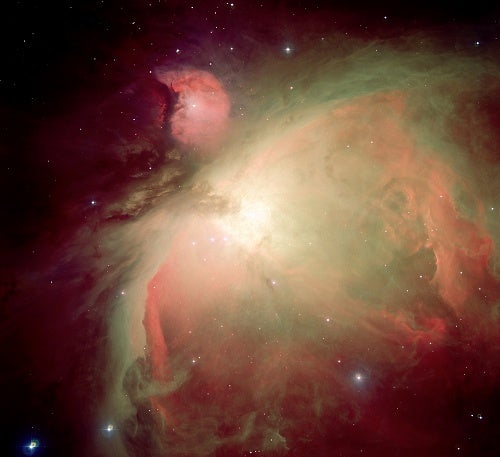Positioned in the Milky Way at a distance of 1,500 light-years, the Orion Nebula is essential to the study of star formation. This active area has produced thousands of new stars within the past 10 million years. With a new image captured by the European Southern Observatory (ESO), we are reminded why M42 is one of the most popular rich regions in the night sky.
Led by Massimo Robberto of the European Space Agency and the Space Telescope Science Institute, the team used the Wide-Field Imager (WFI) — a 67-million pixel CCD device attached to the 2.2-meter scope at La Silla in Chile — to capture the image.
Using previous observations of the Orion Nebula and those performed with the WFI, astronomers study the maas accretion rate — the rate at which mass collides with young stars and the effect this has on the stars’ positions. Astronomers believe the later phases of star formation are influenced by the onset of ionizing radiation from larger stars. Previous observations have shown the mass accretion rates are lower in the Orion Nebula than in other more diffuse stellar nurseries. Indications are that the WFI observations should validate this theory.










